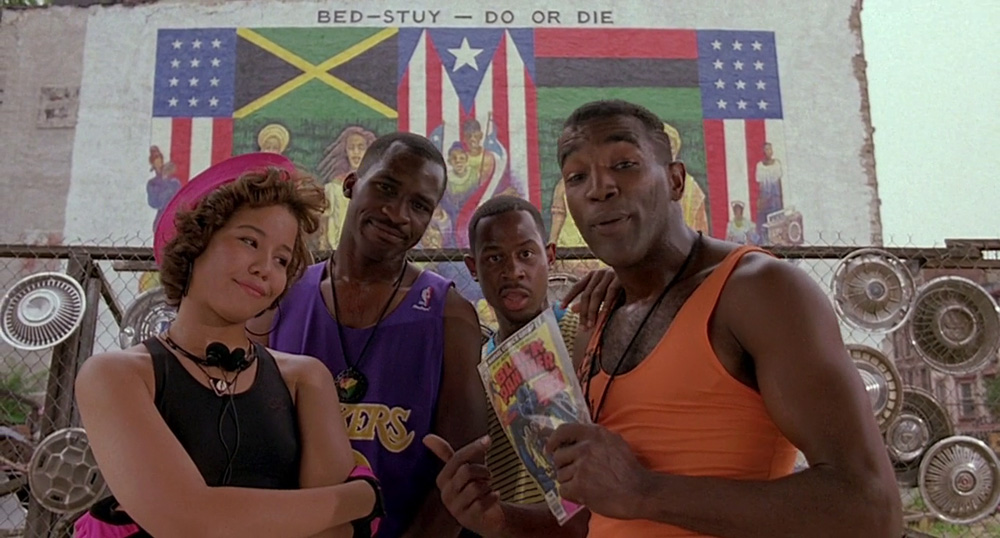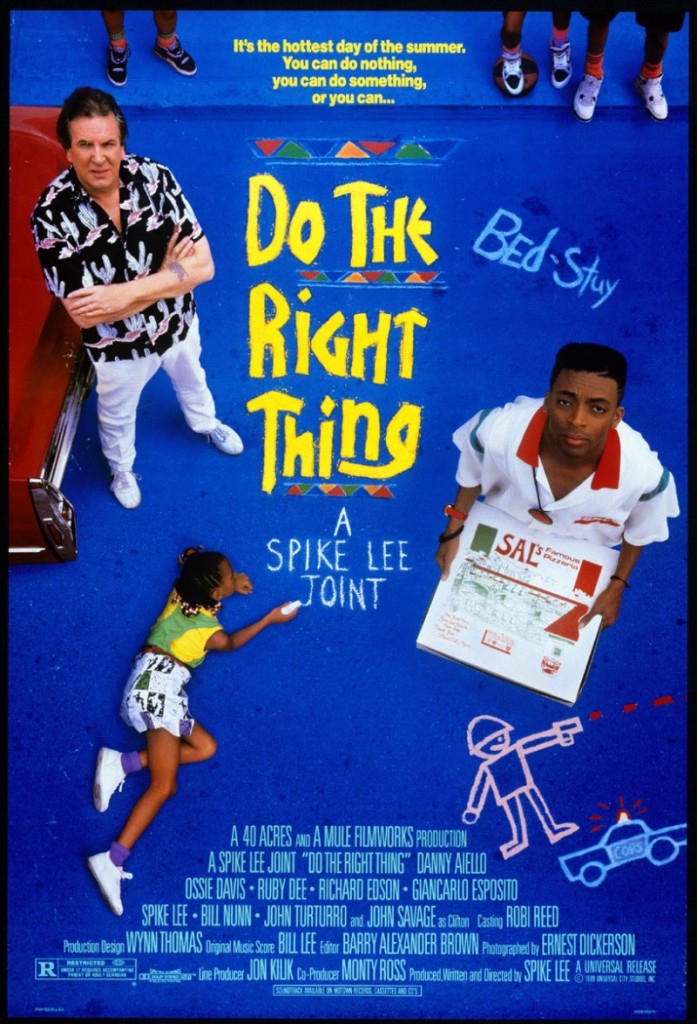If you search Google for movies with the best dialogue, you get a lot of familiar hits. Writers like Woody Allen, Quentin Tarantino, Richard Linklater, Charlie Kaufman, John Hughes and Aaron Sorkin. Some of these writers thrive on realism (Linklater), others on flash (Tarantino), but all of them have the gift of making you pay attention when one of their characters speaks. It’s an invaluable talent, and therefore quite frustrating if you’re born without it. As I’ve said before, I don’t think mediocre dialogue writers can ever become great dialogue writers. But I think mediocre dialogue writers can become good dialogue writers with a hell of a lot of work. It’s a matter of understanding the basics (come late into a scene, your characters shouldn’t speak “on the nose”) then putting your characters in the best position to say interesting things. That’s what too many writers overlook. They try to write great dialogue out of nothing, when great dialogue typically comes out of setting up the situation beforehand. Today’s script marked the arrival of an incredible new talent, Spike Lee. One thing everybody agreed on was that Lee hit out of the park with the dialogue in this script. I couldn’t agree more. Try watching this movie and turning away. Every time someone speaks, you want to hear what they have to say. Why? What magic potion is Lee using? No magic. Just tried-and-true dialogue-writing methods. In fact, even the naturalism in Lee’s dialogue is born out of an easy-to-learn lesson. I do want to highlight a couple of non-dialogue tips here too, but dialogue will be the focus. Let’s begin!
1) The power of character differences – Sometimes all you have to do to write great dialogue is put two different people in a scene and have them talk to each other. Use differences in age, differences in race, differences in political views, differences in class. That’s what gives Do the Right Thing so much of its great dialogue. The different races always see the world differently, which is what leads to all these conflict-heavy entertaining conversations.
2) Choose stories that hide your writing weaknesses just like you choose clothes that hide your body weaknesses – This is self-explanatory yet a lot of writers make this mistake. If you’re a flashy dialogue writer, write a movie that’s heavy on dialogue. If you’re not, avoid scripts like Do the Right Thing like the plague. Good writing can be as simple as staying away from the things you’re bad at.
3) Another way to develop character – My big takeaway from this script is that character development isn’t always about a character changing. It’s about a writer revealing more about that character over time to create the illusion of change. The drunk old man looks like a loser at first. But the more we learn about him, the more we like him. He even saves a kid from a speeding car later. So he doesn’t change as a person. But he changes in our eyes because we know more about him now than we did at first.
4) Add fuel to the conflict fire whenever possible – Remember, most great dialogue results from conflict. So you should look for any way to stoke that conflict. This script already has a ton of conflict because of all the racism. But Lee adds the WEATHER to make it even worse. In Do the Right Thing, it’s the hottest day of the year. People have less patience in hot weather. They’re more easily agitated. A simple argument can escalate quickly. Which is exactly what happens.
5) In One-Day stories, the weather can become a character – I realized that if your script takes place over one day, the weather can become a major character in your story. Here, it’s the heat. But in another movie, it can be the coldest day of the year. Or the rainiest. Or the day of a huge blizzard. When you have a movie that takes place over this short a period of time, pay attention to the weather, as the right weather choice can have a huge impact on the story.

6) People on the same side don’t always agree – Even characters on the same side should disagree about things. Don’t assume that just because Sal and his son work together at Sal’s Pizza that they’ll have the same views about everything that’s happening. What I liked about Lee’s script is that Sal was respectful of others, whereas his son was racist. Sal wanted to help people. His son wanted them to help themselves. This lead to conversations between the two that were way more interesting (“Maybe we should get rid of this place, Dad.”) than if these two thought the same way. Remember, not every scene can be two people with hatred towards one another yelling for five minutes. Conflict has to live within your groups, not just outside of them.
7) Easiest way to write dialogue is to write what you know – Lee grew up with all these characters in his neighborhood. That’s why they all feel so real. Whatever people you grew up with, particularly the eccentric and most memorable, make sure you’re writing those people into your scripts. They’ll write the dialogue for you. Never underestimate the power of this simple tip (this is the “naturalism” tip I was referring to in the intro).
8) Theme allows for “pointless” dialogue – Here’s the thing with dialogue. Its main purpose is to push the story forward. The thing is, real life dialogue, the kind that’s free-flowing and crazy and fun to write, doesn’t push anything forward. It’s just people talking. Which means each time you write dialogue, you’re trying to write an oxymoron. The reason Lee’s dialogue is so good in “Thing” is because a lot of it isn’t pushing the story forward. It’s dialogue of the free-flowing crazy variety. So how is he able to get away with it? Easy. Lee has a strong theme in his film – racial tension in the city. When you write with a strong theme and keep the dialogue focused on that theme, you can get away with “rambling” dialogue, because the dialogue still feels relevant. What does four guys yelling at a man for stepping on his shoe have to do with the plot? Nothing. But the man who owns the shoe is black. And the man who stepped on the shoe is white. Therefore, this “pointless” dialogue-heavy scene feels relevant because this whole movie is about racial tension.
9) Variety in characters leads to better dialogue – One of the best things about Lee’s script is how different all the characters are. We have a weird radio carrying guy (Radio Raheem), we have an old drunk man, a man with a lisp, the mentally retarded guy, the African Pride Radio announcer, the troublemaking crew, the old “complainer” guys across the street. The more variety you have in your characters, the more interesting their conversations are going to be. Period.
10) As always, look for unique ways to evolve old phrases – This is where you really see the pros stand out. They take old well-known phrases and turn them into something we haven’t heard before. Sal doesn’t say, “I should kick your ass” to Mookie. He says, “If you were just a little bit taller, I’d kick you in the ass for what you’re thinking.”
BONUS TIP) Evolve phrases by utilizing character specifics – Notice how the above phrase is focused on Mookie’s height: “If you were just a little bit taller.” Lee uses this specific trait of Mookie’s to inspire Sal’s change of the line. It’s easy for you to do the same. For example, if you’re writing a rom-com where a woman is asking our main character (who’s a lawyer) how he knows some important piece of information, his reply might be, “I’d tell you but I’d have to kill you,” But everyone uses that line. So look at your options. What’s specific about our character? He’s a lawyer, right? So maybe the response is, “I’d tell you but I’d have to bill you.” That’s admittedly lame but you get the idea!


